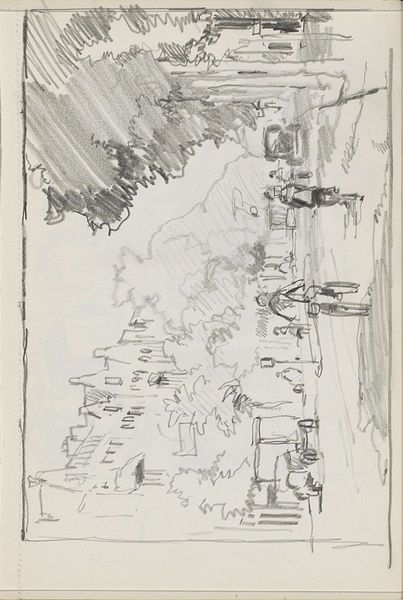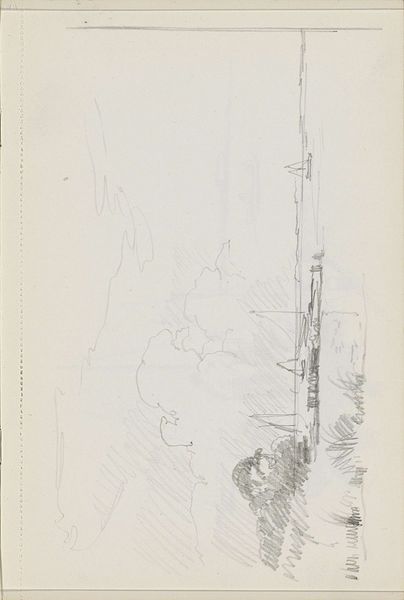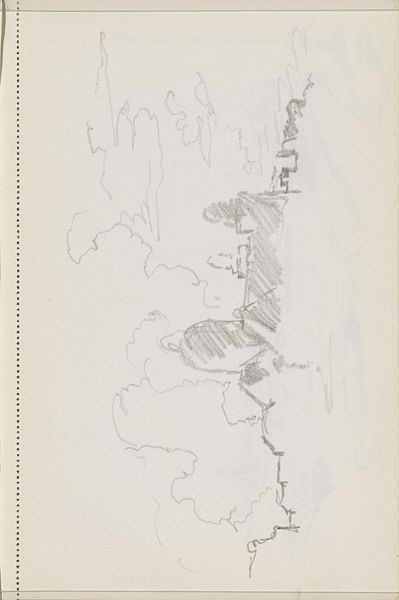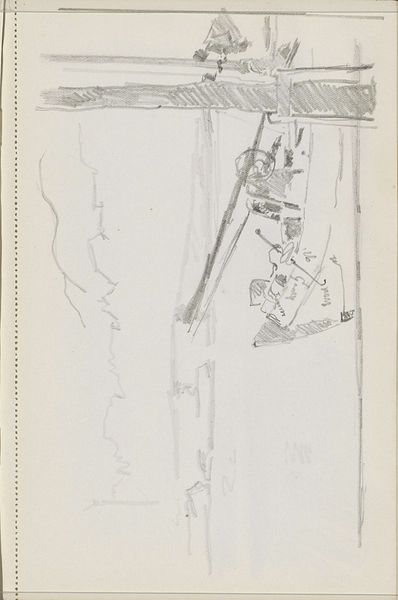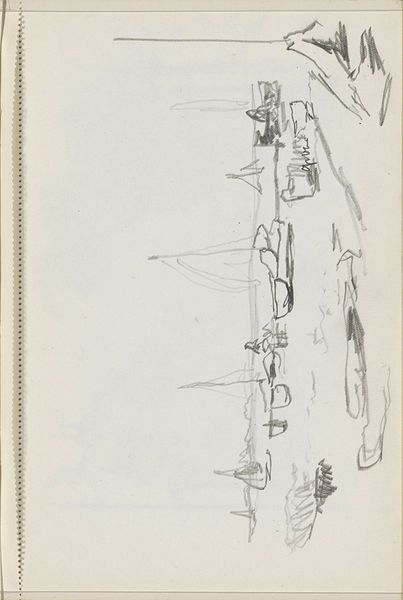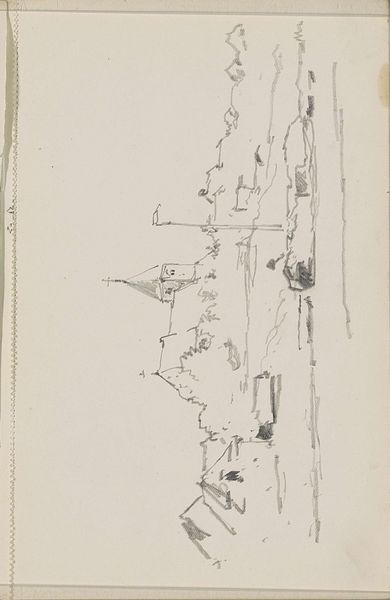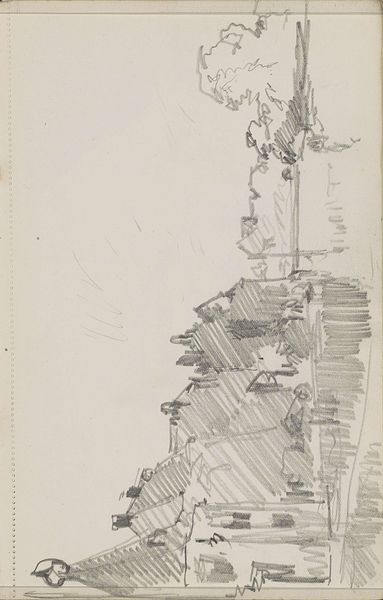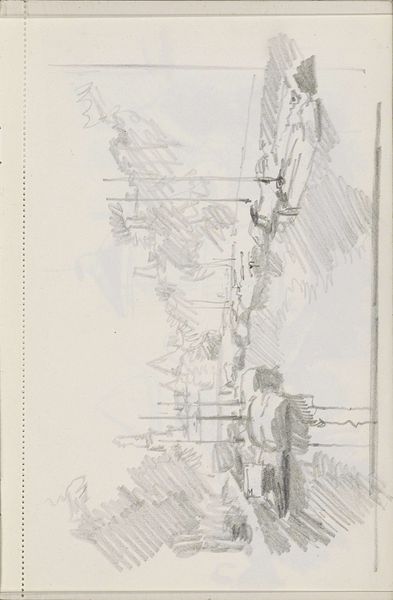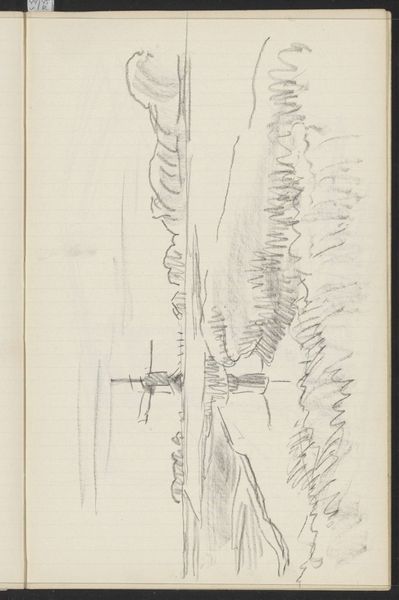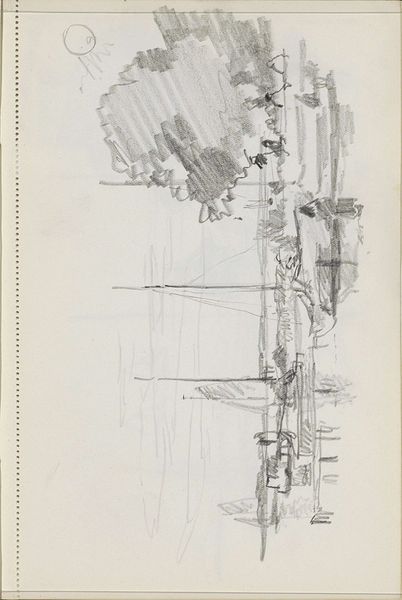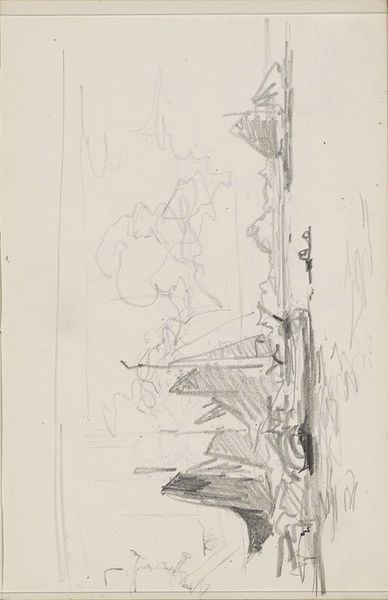
Copyright: Rijks Museum: Open Domain
Curator: Looking at this pencil drawing, there’s something stark about the contrast of the sketched harbour against the vast, empty sky. What do you think? Editor: It has a quiet intimacy that’s almost deceptive. This work, "Havengezicht", by Cornelis Vreedenburgh, likely made between 1890 and 1946, is deceptively simple, yet feels so loaded. What was Vreedenburgh hoping to convey? Curator: Considering the period it was made in, it is tempting to delve into the socio-political influences. With increasing industrialisation we often see landscape as a site of labor, trade and capital, rendered here by subtle textures of graphite and paper. The level of precision, however, shows his mastery. Editor: Exactly. We see so little tangible information, yet everything we need is available. Given its current placement in the Rijksmuseum, how does an everyday working harbour scene, done in pencil, negotiate a space within a repository for historically and culturally significant artifacts? Curator: Good point, there is this push and pull. Perhaps it's the way Vreedenburgh coaxes out depth with such a seemingly basic instrument. What at first seems rudimentary reveals itself as an astute observation of light and space. The sketch aesthetic allows us a privileged insight into the materiality of labor, the labor of art-making itself. Editor: I think its strength lies in its deliberate ambiguity and quiet, honest simplicity. I see it not just as a view, but almost as a quiet visual document—the social fabric woven into its very texture, inviting us to look beyond mere representation. Curator: That reminds me, his method underscores how art can arise from anywhere – a common harbor, standard materials – challenging who dictates value. What tools define “Art” or artistry itself. Editor: Well said! The understated impact truly encapsulates history. It’s remarkable how it captures so much with such subtlety.
Comments
No comments
Be the first to comment and join the conversation on the ultimate creative platform.
